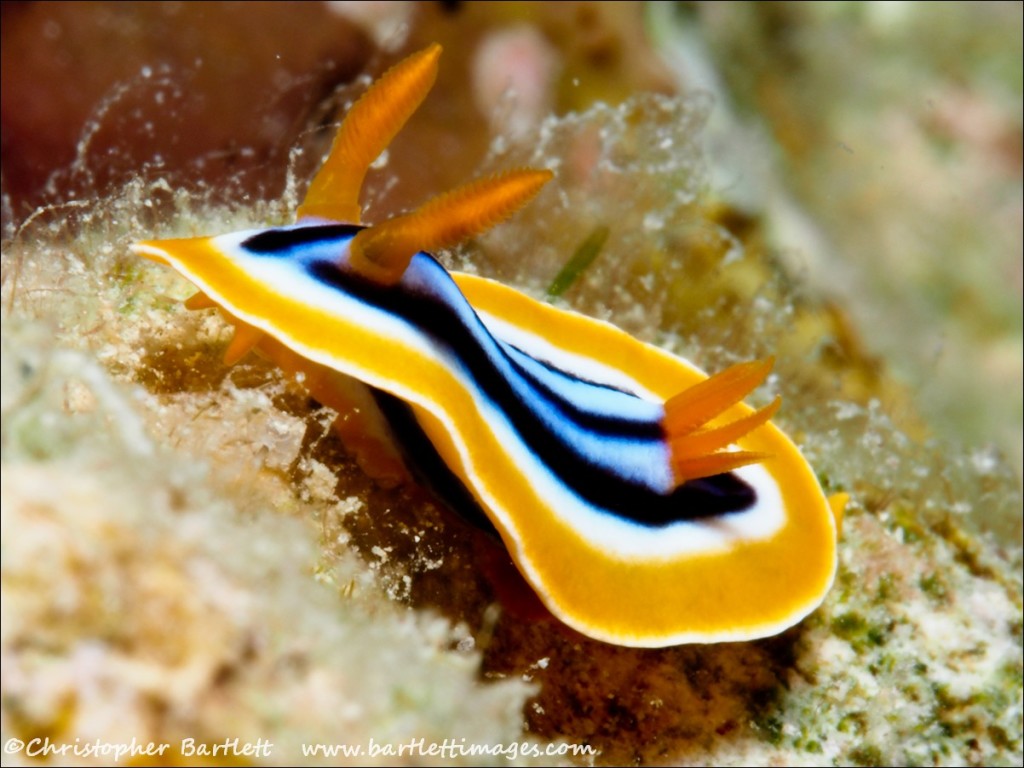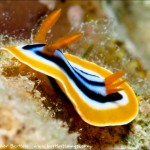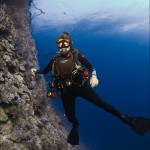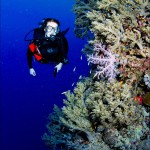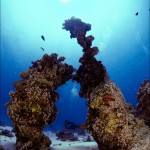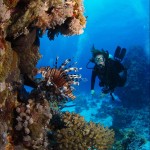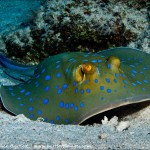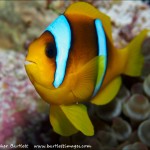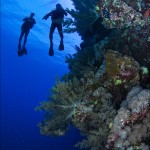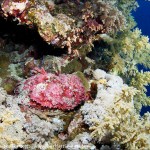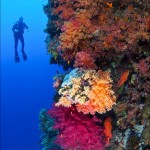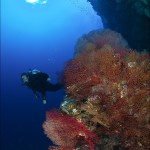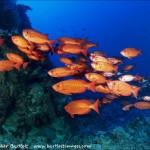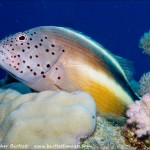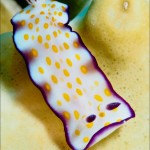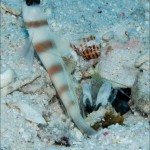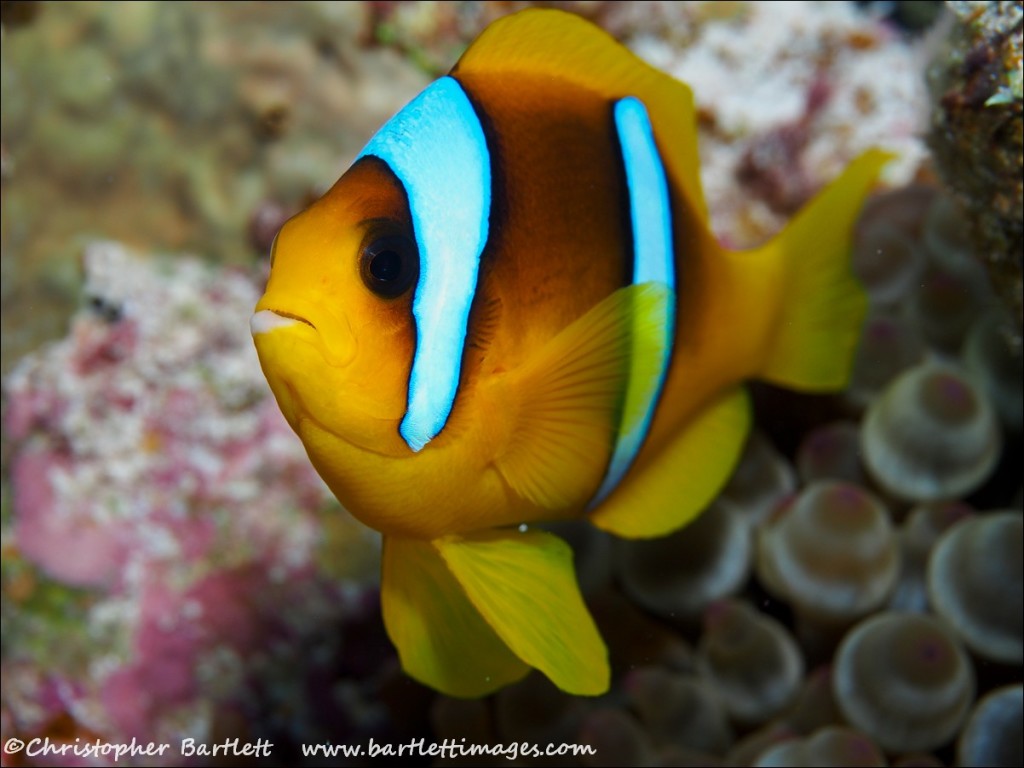
Brothers, Daedalus, and Elphinstone; three of the most iconic Red Sea names that are on the wish list of many Red Sea divers. With the Brothers islands and Daedalus reef being roughly a 12-hour cruise from the shore, a liveaboard is the only way to get there. In June 2013 I chartered one for a week and went to check the sites out.
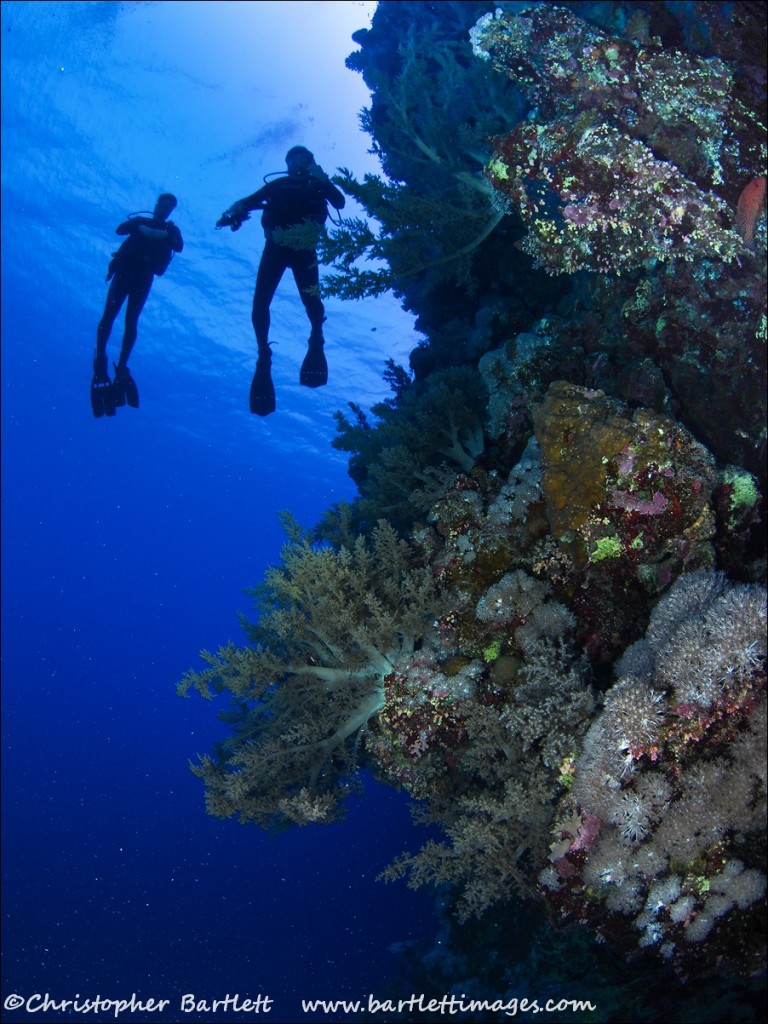
The typical route is first a day at Abu Dabbab, an overnight cruise to the Brothers for two days diving, then overnight to Daedalus, two days diving, overnight ride to Elphinstone, and two dives there one the final day. However, due to some strong winds from the north, into which around have had to cruise to get to the Brothers, we first sailed south to Daedalus after some gentle warm up dives off the coast of Marsa Alam. It was also the opportunity for people to practice inflating a surface marker buoy (aka safety sausage), a useful skill when diving out in the middle of the Red Sea on isolated reefs
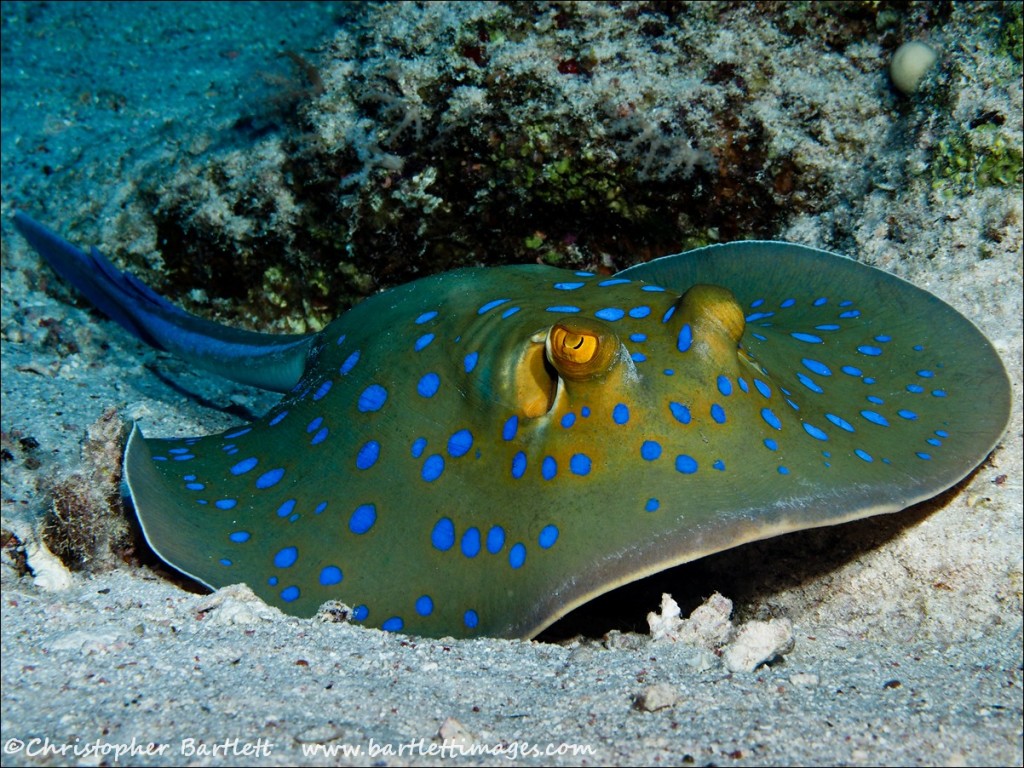
I was giving a photography workshop to some of the divers and some shallow, gentle dives were ideal for refamiliarization with the cameras’ functions and settings on colourful reef fish and a few blue-spotted rays. The change of routing suited me too, as I spent a week diving just the Brothers in 2010, and knew what we would be getting, whereas the D and E of the trip were unknown entities, aside from from our expectations of seeing some sharks.
Daedalus has a reputation for sharks, notably scalloped hammerheads, and that’s what we were aiming for after an uneventful night time cruise. The briefing was simple. We’d drop on the east flank of the reef, illuminated by the rising sun, move off the reef into the blue, just keeping sight of it, and drift south with the current at around 25 metres for 20 minutes to see what turned up. Many of the divers had never seen a hammerhead before, and some had never seen a shark in person, so the anticipation levels were high.
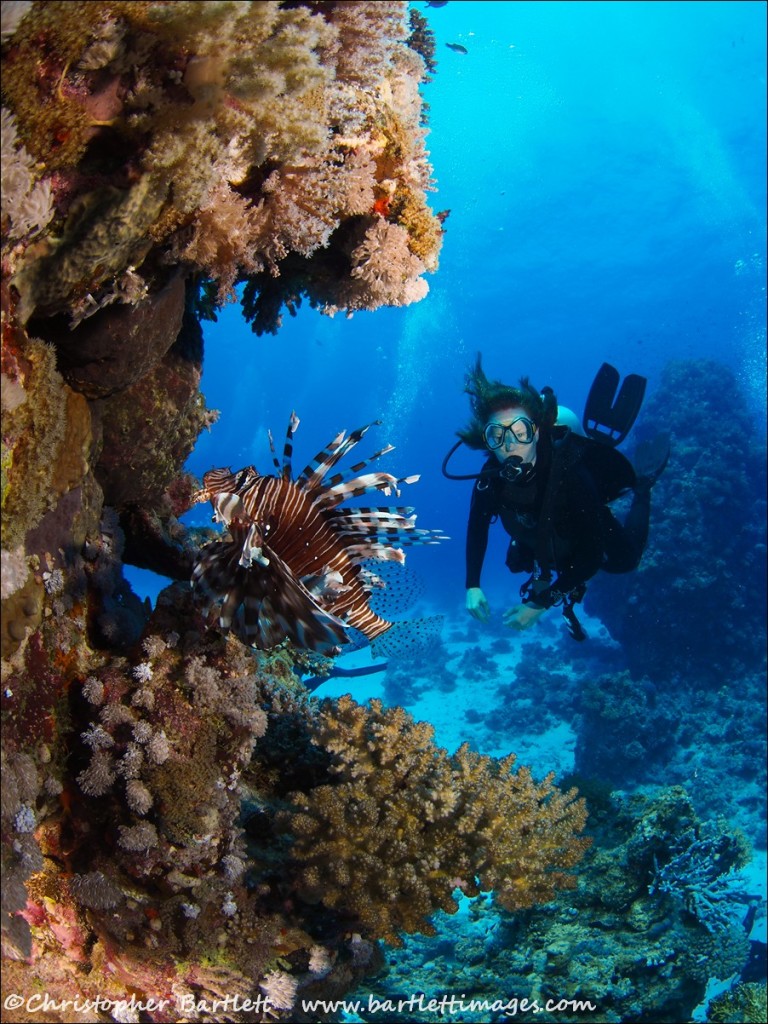
We split into two groups, one of eight, one of nine, each with a local guide, and dropped 10 minutes apart. There was one other liveaboard there, and her divers were just stirring as our second group hit the water. The viz was the usual clear Red Sea blue, the wall covered in soft corals. If we don’t get lucky with the hammers, the wall will be very pretty I thought to myself. It was a wasted thought. We’d barely had time to fin off the wall when a solitary hammer made a pass below us, slightly further out. It wasn’t close enough for a picture, not by some distance, but that only served to emphasise its size. As it turned to return from whence it had come, there was a distinct absence of scalloping on its funny head. We’d just encountered Sphyrna mokorran, the Great Hammerhead. What a start!
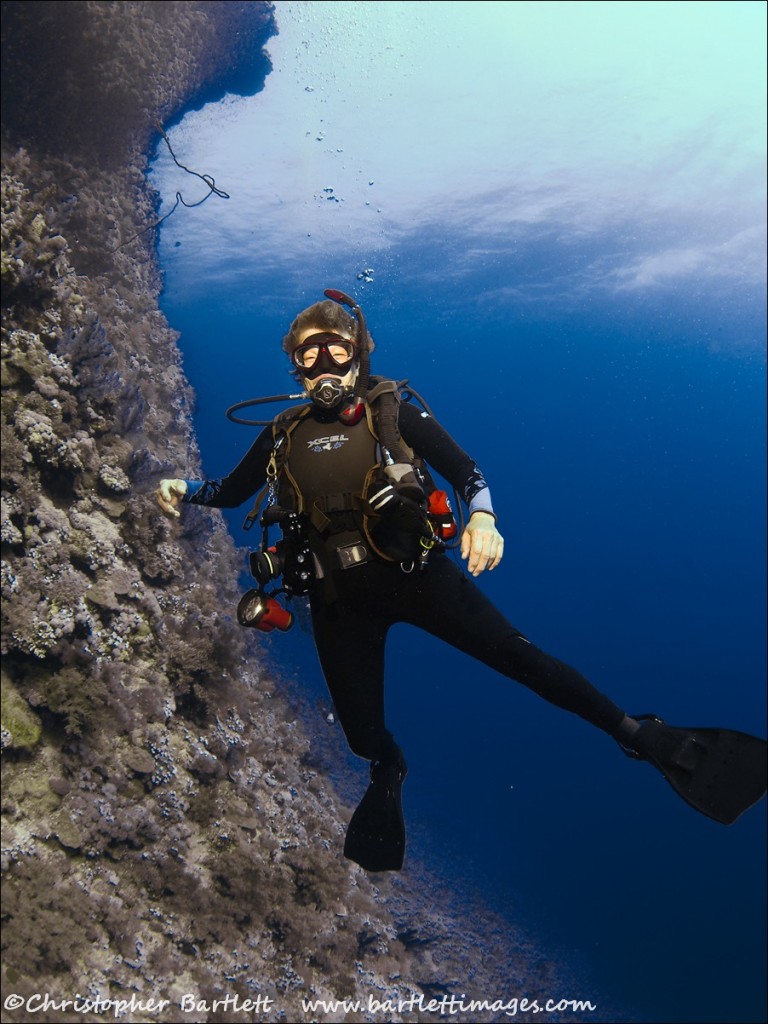
Ten minutes later, just as I was starting to get that funny cross-eyed feeling from peering into the blue, trying not to focus on the micro-particles floating by, along came another, or was it the same one back for another peek? It never came close enough for us to ask, but it was none too shabby a start. Back on the reef, the dendronepthyas swayed gently, like floppy oversized broccoli heads. Fairy basslets adorned the points and pinnacles.
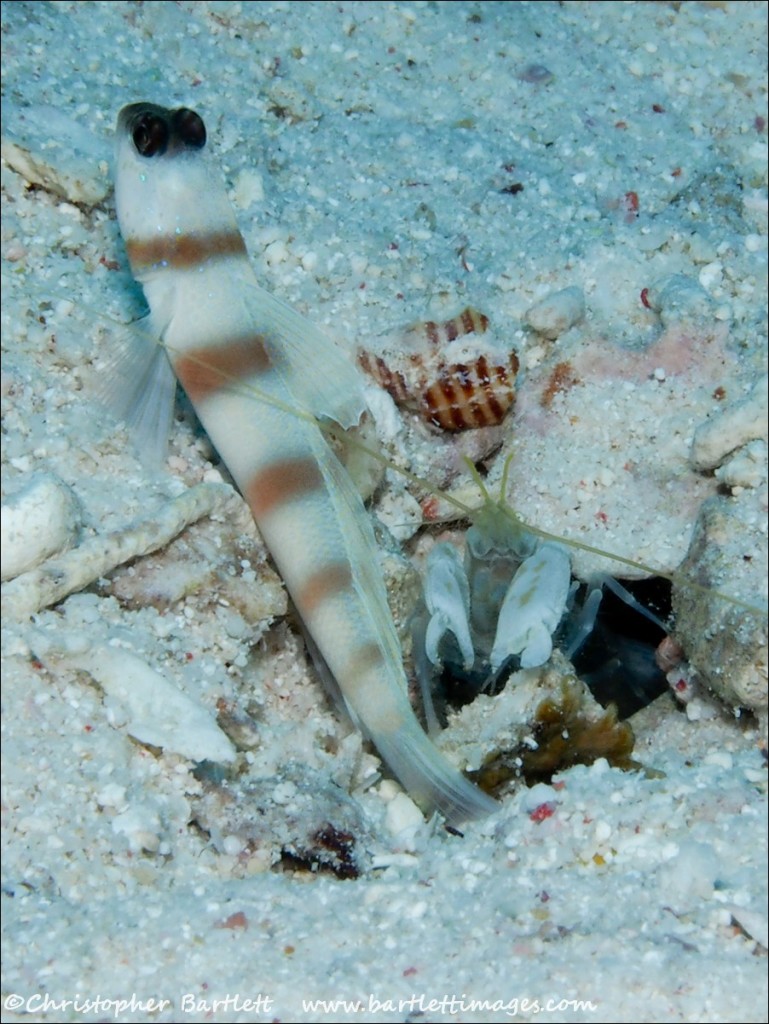
Our dives over the next two days were essentially the same brief, only the shoulder to the reef changing as we would dive the east in the morning and the west in the afternoon. Given the remote nature of the sites and the deep bottom, no night diving is allowed. We’d either be dropped by the small RIBs and return to the moored boat, or jump off the dive deck and be picked up by the RIB.
As we tended to dive at different paces, ranging from slow to super slow, most of the time we were diving in buddy pairs or fours and as a consequence different people had different encounters. Everyone saw at least one school of scalloped hammerheads, school size ranging depending on who was doing the counting. The same people always seemed to see more than others. Grey reef sharks were a common sighting on Daedelus, and half of us (not my half) saw a giant manta cruise by. Though the slight air of disappointment amongst my stick was short-lived, as the next dive our dive guide, Ahmed, was treated to his first Tiger shark sighting on Daedelus in six years of diving. She wasn’t a monster, but on a sub-three-metre sub-adult the markings were unmistakable, despite being too far away for my 8m fisheye lens.
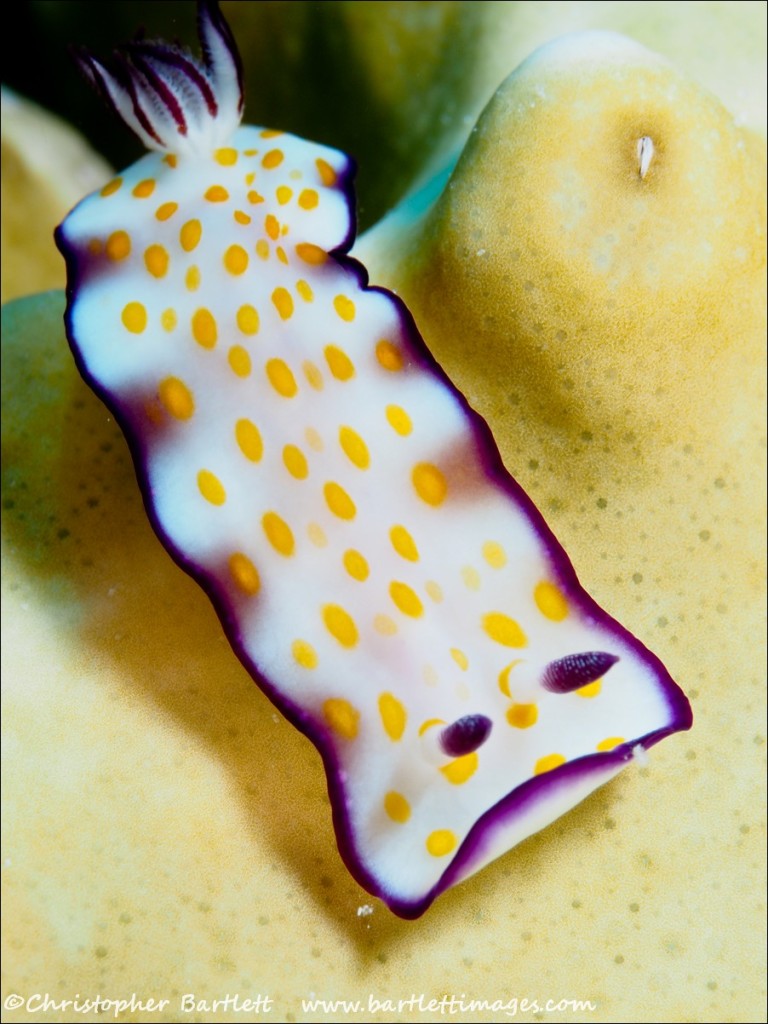
After two days, it was time to cruise overnight to Elphinstone. The wind was still coming from the north, giving us a bumpy ride, and I preferred sleeping on the back deck in the open air to getting banged around in my cabin in the bows. Elphinstone is a cigar-shaped reef, around 400 metres long, rising to a couple of metres below the surface. On a good day it can be reached from Marsa Alam in a RIB. Today wasn’t such a day. We awoke to some surface chop and one other liveaboard. Moored on the southwest end of the reef, the white caps on the northeast tip were prominent and small waves were starting to break over the top
Underwater she was sweet. Big blue walls. The idea was to start close to the southern plateau, look over the west-facing edge to see what was hanging out in the current and then go along part of the eastern side, protected by the massive wall, before returning to the boat. As we moved onto the plateau, the current started to pick up, the more I finned into it, the faster it pumped. The effort was worth it though. Fusiliers and snapper darted around, looking for breakfast whilst avoiding becoming brekkie for the dog tooth tuna and grey reef sharks that patrolled just off into the blue. We hung out, literally, with a finger grip on some substrate before letting go and drifting back to our entry point and exploring a bit of the current-free wall to the north.
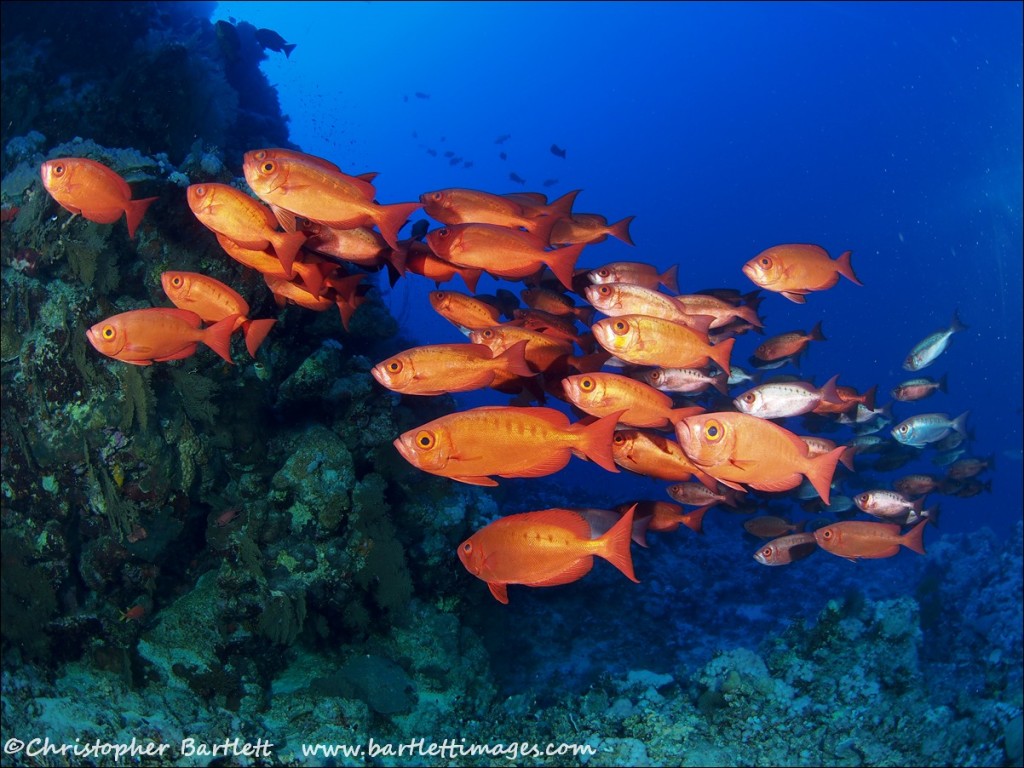
As we ascended the conditions became a little more challenging with down currents in a couple of chimneys where the waves were breaking on our side of the reef now, pushing divers close to the wall onto it. We were close to the boat and decided to end the dive, we’d had 40 good minutes anyway. 10 metres away from the reef the water was calmer, but on the safety stop we could see the boat’s dive deck slapping up and down menacingly. Climbing the ladders with kit on was not going to be fun. We were the first group now, and as such, guinea pigs. After a bit of a struggle for a couple of divers, we launched the RIBs for the second group. dekitted them on the RIB and then they jumped back in to go up the ladders. Transferring from the RIB to the back deck was not an option.
Given the inclement conditions, we decided to move inshore for the next two dives, Elphinstone was not going to see anymore divers that day. Her iconic oceanic white tips had eluded us, but it could’ve been worse. Abu Dabbab has six reefs, so we checked out a couple and although low on adrenaline-producing dives, it did produce some pleasant and wide-angle and macro images. and two 80-minute dives in flat seas.
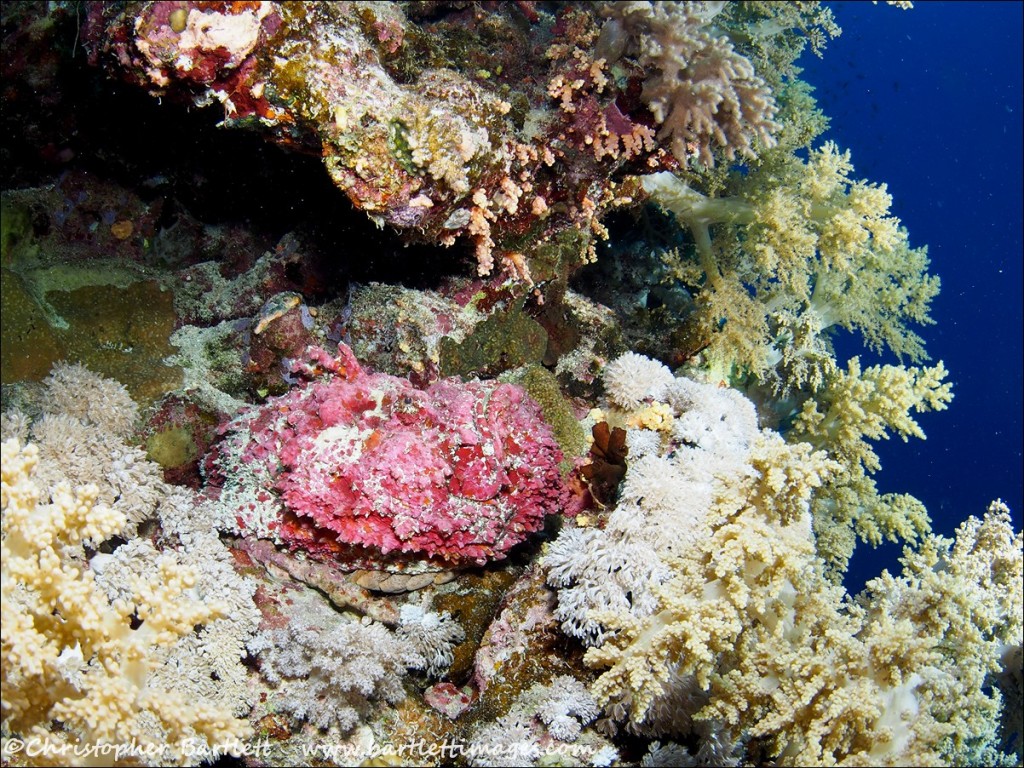
Heading to the Brothers that night, it was a different story. The wind still hadn’t abated, but it the skipper and owner decided we could make it. Sleep was fitful, even on the back deck exactly midships, with the odd wave breaking over the back deck until the sun rose. The Nitrox blender had come lose during the night and would be out of order for the rest of the trip. We could make out the 32-metre high Victorian stone lighthouse on Big Brother, and as the golden orb of the sun appeared out of the Red Sea, the wind died down. By the time we were moored up and invigorated with coffee, the sea was, by Elphinstone standards, flat.
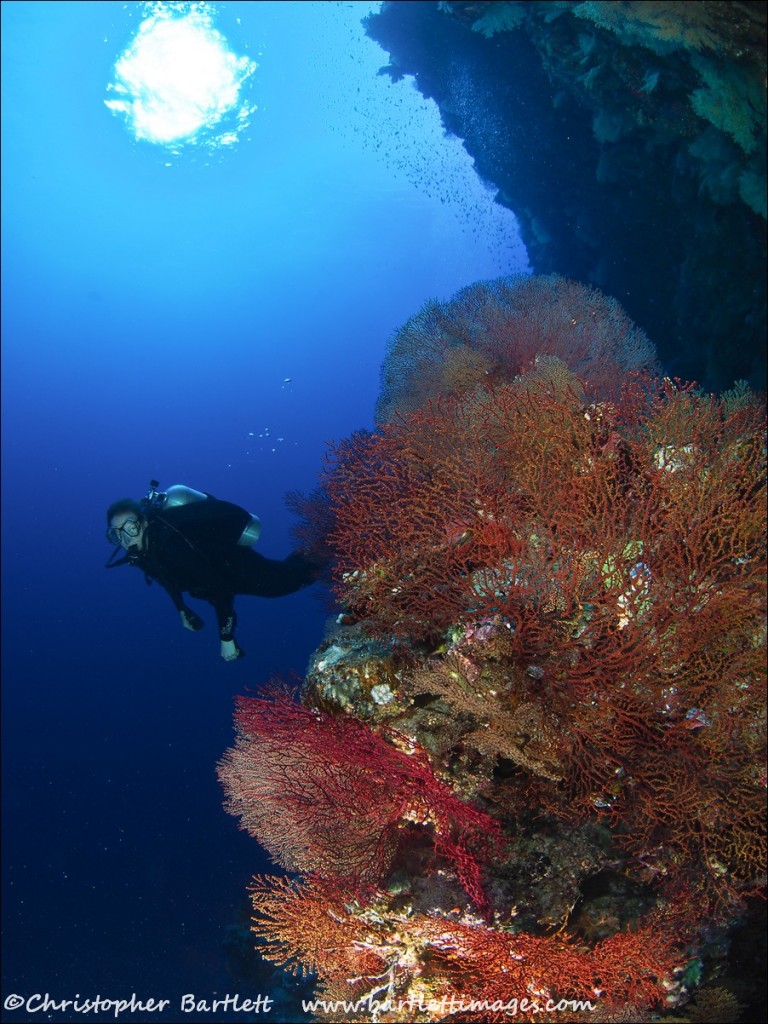
It helps that Big and Little Brother are actual islands, their near shear sides providing decent protection on the leeward side. Currents here are generally north to south too, making the Numidia wreck on the north of Big Brother an excellent starting point. She was a 130-metre long cargo ship carrying railway sleepers and bogies to India on the voyage that turned out to be her last. Now the top of the wreck sits at around 13 metres, dropping down into the depths way beyond the limits of recreational diving. At 30 metres her hold is open and decorated with an abundance of soft corals and anthias.
After 15 minutes on her we took the west wall south, drifting over the second wreck here, the Aida, once a transport ship supplying the small garrison on the island (now only a dozen) that somehow also managed to hit the reef, her bows sit 26 metres down, pointing upwards at an angle. We moved along the wall, exploring the nooks and crannies, cracks and crevices, finding giant morays, scorpionfish, a truly massive pink stonefish, more grey reef sharks, and a silvertip, drifting three-quarters of the length of the island until we found our mooring lines and followed them back. In the past I have seen oceanic whitetips hanging around the boat, looking for scraps but not this trip.
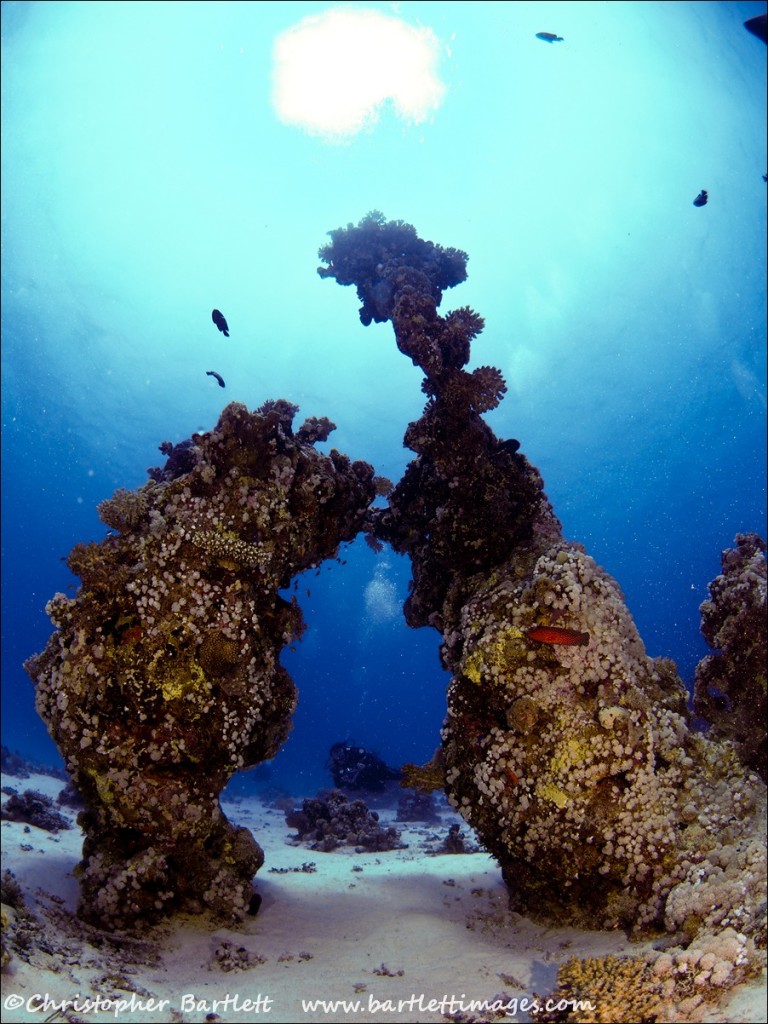
The southern end of Big Brother has large patches of gorgonian fans, black coral, and a plateau that is popular with thresher sharks. Unlike the oceanic white tips, they were around and another entry for the life list of almost everyone on board. There short snout and long tail see them called “fox sharks” in French and German, though they get their English name from the characteristic shape of their caudal fin, used to stun schooling prey.
Of the two Brothers, on my previous visit Little Brother was my favourite and turned out to still be the cuter of the two, and overall my favourite offshore reef in the Red Sea. What he lacks for in size, he makes up for in quality and quantity. There is more colour, more variety, and more fish here, and few boats. All in all, a winning combination.
For more information on Christopher’s UW photo workshops please look here http://www.bartlettimages.com/trips—voyages.html.
For more information about Indigo Safaris and their dive trips see www.indigosafaris.com and navigate to the destination of your choice.



